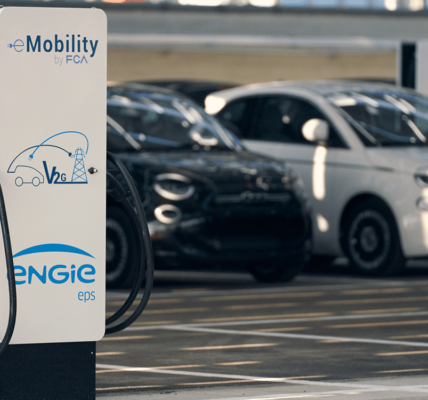Reducing emissions from new motor vehicles sold in the EU to meet the European Green Deal’s zero-pollution goal, while keeping vehicles affordable for consumers and promoting Europe’s competitiveness is a tall order. Even so, the European Commission has presented a proposal that attempts to accomplish it.
“We cannot accept a society where exposure to air pollution is responsible for more than 300,000 premature deaths in the EU-27 alone annually. The new rules will help us breathe safer air and help the sector to become greener and more resilient. We need to stick to the objective of the European Green Deal and become a standard setter globally,” Margrethe Vestager, the Commission’s Executive Vice-President for a Europe Fit for the Digital Age, said on November 9, introducing the Euro 7 motor vehicle standards.
The new Euro 7 motor vehicle standards will ensure cleaner vehicles on European roads and improved air quality, protecting the health of EU citizens and the environment, the Commission said.
Road transport is the largest source of air pollution in European cities, says the Commission, which serves as the executive branch of the European Union’s government.
In 2018, more than 39 percent of nitrogen oxides (NOx) and 10 percent of both coarse and fine particulate matter in the EU came from road transport. These percentages are far higher in cities. It is estimated that road transport caused about 70,000 premature deaths in the EU-28 in 2018, the Commission says.
If the Commission’s proposal is adopted, in 2035, the Euro 7 standards will lower total NOx emissions from cars and vans by 35 percent and by 56 percent from buses and lorries compared to current emissions.
At the same time, particles from the tailpipe will be lowered by 13 percent from cars and vans, and 39 percent from buses and lorries, while particles from the brakes of a car will be lowered by 27 percent.
In 2035, the EU has decided that all new cars and vans sold in the bloc must not emit any of the greenhouse gas carbon dioxide (CO2).
Thierry Breton, Commissioner for Internal Market, said, “To protect our climate, all new cars or vans placed on our market from 2035 will be zero-CO2 emissions. In addition to monitoring and supporting the fleet electrification, we are now tackling the emissions that aggravate air pollution and affect our health. With the Euro 7 rules we propose today, we will ensure that combustion engine cars put on our market until 2035, as well as heavy goods vehicles and electric vehicles, are as clean as possible for as long as possible, wherever they are used.”
Still, 15 years after that, in 2050, more than 20 percent of cars and vans and more than half of the heavier vehicles in European streets are expected to continue to emit pollutants from the tailpipe, the Commission admits.
Battery electric vehicles also still cause pollution from brakes and microplastics from tires.
“Euro 7 rules will reduce all these emissions and keep vehicles affordable to consumers,” the Commission promises.
Euro 7 standards and CO2 emission standards for vehicles work together to deliver better air quality and the increased uptake of electric vehicles also enables better air quality. The two sets of rules give the automotive supply chain a clear direction for reducing pollutant emissions, including using digital technologies.
Frans Timmermans, the Commission’s Executive Vice-President for the European Green Deal, said, “The shift to electric mobility will bring important improvements to air quality for citizens. It’s why our CO2-emissions standards and Euro 7 norms work hand in hand to ensure we get more vehicles that are clean and affordable on Europe’s roads.”
“Especially in cities, citizens have been demanding cleaner air, and the new Euro 7 standards will help deliver that. We will have more precise emissions testing that reflects real driving conditions, we will regulate pollutants like ammonia to reduce smog in cities, and we will limit the release of microplastics from tires,” Timmermans said.
“Together with the upcoming CO2-standards for trucks and buses, the new Euro 7 norms will also provide the right framework to get these kind of heavy-duty vehicles on the road to zero-emissions,” he said.
Single Set of Rules Would Simplify Present System
The Euro 7 proposal replaces and simplifies the current separate emission rules for cars and vans (Euro 6) and lorries, or trucks, and buses (Euro VI).
The Euro 7 standards bring emission limits for all motor vehicles – cars, vans, buses and lorries – under a single set of rules that are fuel-neutral and technology-neutral.
The same limits would apply regardless of whether the vehicles use electric drive-trains, petrol, diesel, or alternative fuels.
The new Euro 7 standards are designed to:
– Better control emissions of air pollutants from all new vehicles: By broadening the range of driving conditions that are covered by the on-road emissions tests, they will better reflect the range of conditions that vehicles can experience across Europe, such as temperatures of up to 45°Celsius (113°Fahrenheit) or the short trips typical of daily commutes.
– Update and tighten the limits for pollutant emissions: Limits will be tightened for lorries and buses while the lowest existing limits for cars and vans will now apply regardless of the fuel used by the vehicle.
– Set emission limits for previously unregulated pollutants, such as nitrous oxide emissions from heavy-duty vehicles.
– Regulate emissions from brakes and tires: The Euro 7 standards rules will be the first worldwide emission standards to move beyond regulating exhaust pipe emissions and set additional limits for particulate emissions from brakes and rules on microplastic emissions from tires. These rules will apply to all vehicles, including electric ones.
– Ensure that new cars stay clean for longer: All vehicles will need to comply with the rules for a longer period than currently. Compliance will be checked until these vehicles reach 200,000 kilometres and 10 years of age, doubling the durability requirements.
– Support the deployment of electric vehicles: The new rules will regulate the durability of batteries installed in cars and vans in order to increase consumer confidence in electric vehicles. This will also reduce the need for replacing batteries early in the life of a vehicle, thus reducing the need for new critical raw materials required to produce batteries.
– Make full use of digital possibilities: Euro 7 rules will ensure that vehicles are not tampered with and emissions can be controlled by the authorities in an easy way by using sensors inside the vehicle to measure emissions throughout the lifetime of a vehicle.
Next, the Commission’s proposal will be submitted to the European Parliament and the Council for adoption by the co-legislators.






